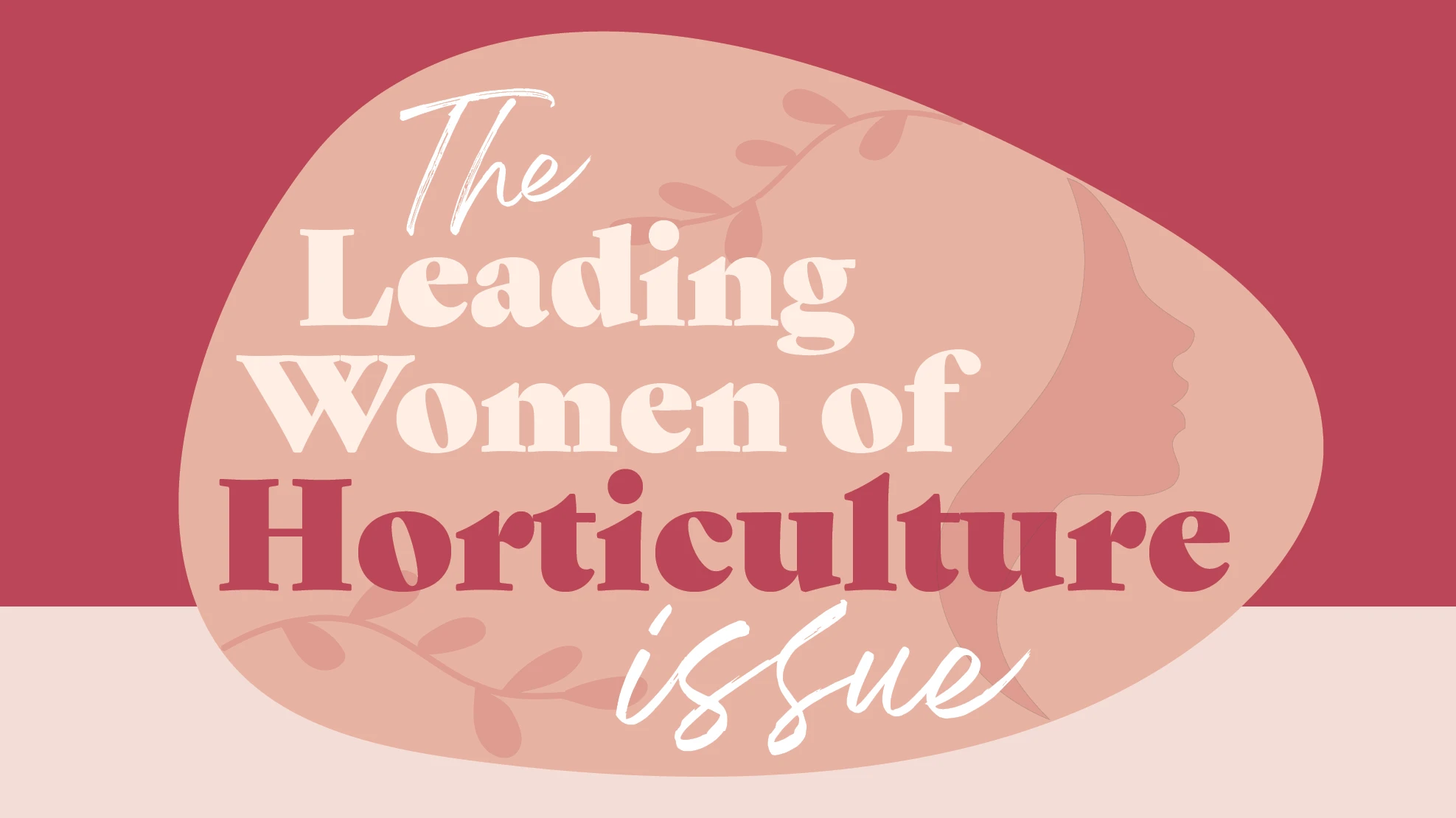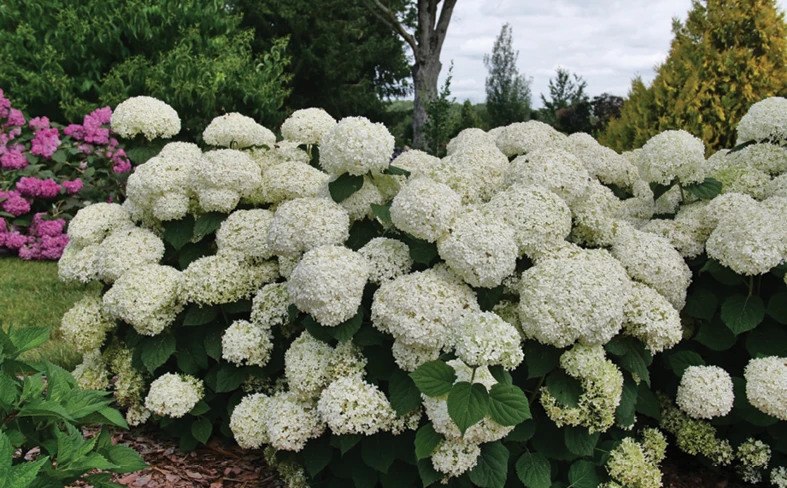|
 The latest experiments with UV light indicate that fewer fungicide applications are required when applied in the correct manner. Research firm DLV Plant in Wageningen, Netherlands, tested the potential of UV light treatments on several nursery crops and perennials. The latest experiments with UV light indicate that fewer fungicide applications are required when applied in the correct manner. Research firm DLV Plant in Wageningen, Netherlands, tested the potential of UV light treatments on several nursery crops and perennials.
During the past growing season, DLV Plant conducted follow-up research in the potential of sustainable control of fungi with the help of UV light treatments. The crops tested were Prunus, Rosa, Quercus, Acer and Sempervivum.
The application of UV light is a fairly new method of crop protection. UV light is applied to the test plants at a dosage that is high enough to kill the fungi and their spores, but not so high that the plant is damaged. The company Clean Light holds the patents for this technique and Dubex developed the equipment.
From preliminary trials, DLV Plant found the technique only works if the hyphae and spores of the fungi are directly exposed to UV light. The control of Cylindrocladium buxicola in Buxus was disappointing due to the tight, dense foliage of the plant. In addition, the fungus develops very quickly, leaving the possibility that the UV light is applied too late for control to happen.
Prunus and Rosa
UV light was found to be effective in the control of powdery mildew on Prunus, Spiraea and Rosa. These results were the basis for the follow up research. DLV Plant wanted to test the suitability of UV light in crops where positive results could be expected.
This past season Prunus laurocerasus ‘Rotundifolia’ and Rosa ‘The Fairy’ were the subjects of various methods of powdery mildew control. Control was compared between an untreated block, a complete control attempt with only UV light, a suitable chemical control method and a combination of UV light and fungicides. When only using UV light, the plants are lighted three times per week from mid-May until the end of August. For the combination control method, UV light was used once per week in combination with two fungicide applications. The trial had multiple replications.
For the application of the UV light, a cart with 10 special fluorescent UV bulbs was used. Each bulb delivers 75 Watts and is protected by a shield tube. The lights are mounted at an angle to facilitate light penetration into the foliage both from the top and the sides. Direct and optimal lighting is very important as UV light has no lingering effects and cannot penetrate through leaves.
At the end of August, 50 random leaves were picked in each trial block and examined for the presence of powdery mildew. The untreated blocks of Prunus and Rosa were heavily infested with powdery mildew. Eighty to 90 percent of the sampled leaves were covered with at least 20 percent powdery mildew. In the other three treatments, the infestation was considerably less. The chemical treatment, which had a total of five applications of fungicide, had the lowest level of powdery mildew infestation. Each of the UV light treatments had more leaves with powdery mildew, but the intensity was much lower than the control. Only a small portion of the leaf was covered in mildew.
Prunus showed no difference between the UV-light-only treatment and the single UV light treatment supplemented with fungicide application. In Rosa, the latter gave a marginally better outcome.
Quercus, Acer campestre and Phlox
In Quercus, Acer campestre and Phlox, only exploratory trials were conducted to check the effectiveness against powdery mildew. A comparison was made between untreated and three-times-per-week UV light treatment. The research shows that UV light is very effective in reducing the amount of powdery mildew on Quercus leaves. The effectiveness on mildew in Acer and Phlox was disappointing. During the flowering of Phlox, an abundance of mildew hyphae formed in both the control and the treated plants. The fungus could not be reached by the UV light as the result of the shadows cast by the flowers.
Sempervivum is sensitive to the root rot fungus Rhizoctonia. Rosette cuttings are allowed to dry for two weeks prior to potting. A portion of the cuttings was treated with UV light during this period. Subsequently the cuttings were potted and put onto two production fields. Each field had roughly the same number of treated and untreated cuttings. One of the fields received UV light three times per week for a six week period.
The other field was not given UV light treatments.
A week after potting, the cuttings that were lighted during the drying process became light in color and the bottom leaves rotted away. At the end of the crop, this difference had disappeared. The field that was lighted did turn out to have far fewer dropouts (18 percent) than the field that wasn’t lighted (31 percent)
UV effectiveness
The trials point out that it is difficult to control powdery mildew entirely with UV light treatments. However, heavy infestations can be prevented as long as the light has the opportunity to hit the fungal hyphae and spores directly.
In addition the number of chemical applications can be reduced by utilizing UV light one or more times per week. Other treatments have also shown that a synergistic approach or combined method approach to be more effective. One can think here of plant strengthening materials in combination with fungicides.
The trials give ample reason to start experimenting in methods to translate the research into practical applications. Growers may consider mounting a UV lamp on the side of a cultivator to help reduce the intensity of mildew infestation. A fair bit of development will be required before practical application can be made of this research.
For more: DLV Plant, www.dlvplant.nl.
Story and photos courtesy of Plant Publicity Holland.
|

 The latest experiments with UV light indicate that fewer fungicide applications are required when applied in the correct manner. Research firm DLV Plant in Wageningen, Netherlands, tested the potential of UV light treatments on several nursery crops and perennials.
The latest experiments with UV light indicate that fewer fungicide applications are required when applied in the correct manner. Research firm DLV Plant in Wageningen, Netherlands, tested the potential of UV light treatments on several nursery crops and perennials.




